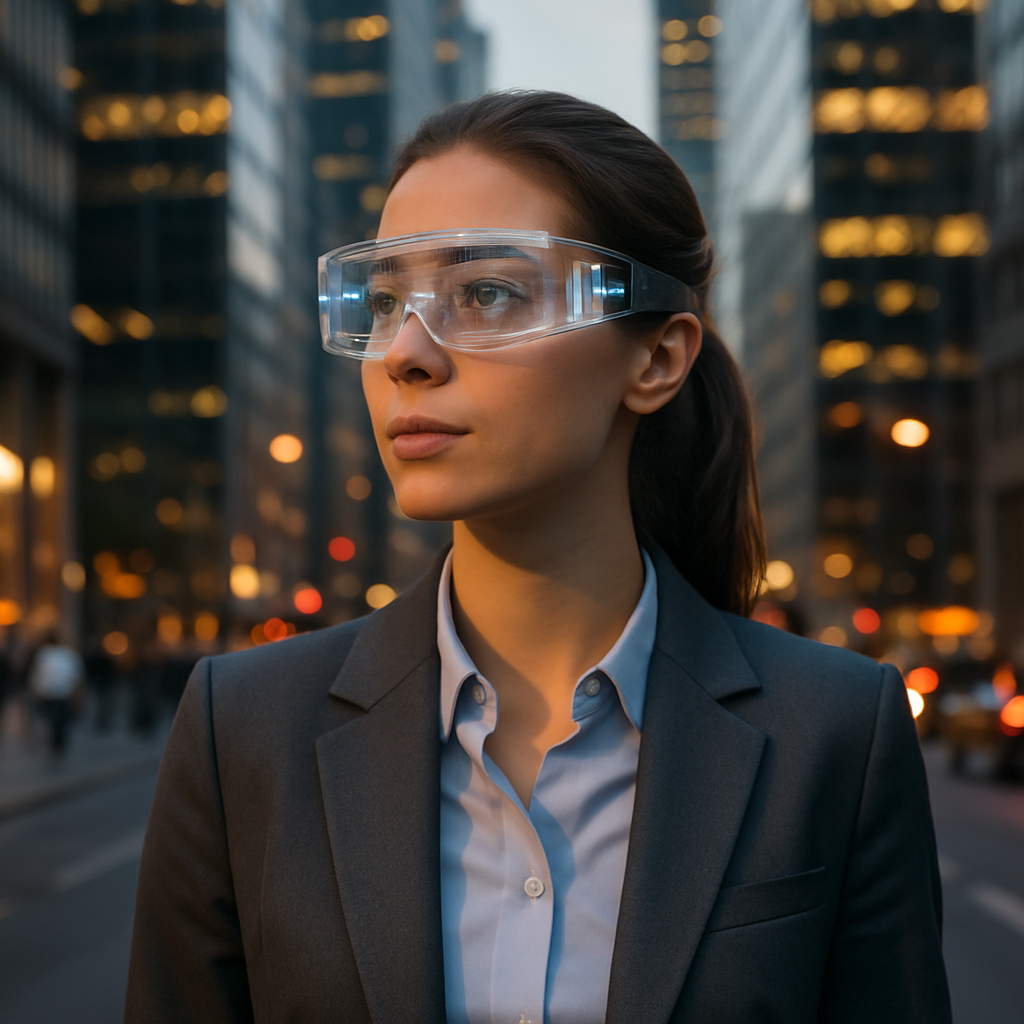The Future of Wearable Tech Beyond Smartwatches

Wearable technology has rapidly expanded beyond the familiar smartwatch on your wrist. While Apple Watches and Fitbits have become commonplace accessories, they represent just the beginning of a technological revolution that’s spreading across our bodies and integrating into our daily lives in ways previously confined to science fiction. The next wave of wearables promises to be more intuitive, less obtrusive, and potentially more transformative than anything we’ve seen so far.
The wearable market is projected to reach $118.16 billion by 2028, according to Fortune Business Insights signaling massive growth beyond the wrist-based devices that currently dominate the landscape. This expansion isn’t just about new places to put screens; it represents a fundamental shift in how we interact with technology and how technology interacts with our bodies.
Beyond the Wrist
Smart clothing might sound like a gimmick, but it’s quickly becoming practical reality. Companies like Sensoria have developed smart socks with pressure sensors that analyze your running form and help prevent injuries. Meanwhile, Levi’s and Google’s Project Jacquard created a denim jacket allowing wearers to control their smartphone by simply touching the sleeve no need to pull out your phone while cycling or walking.
The integration goes deeper than just convenience. Hexoskin’s smart shirts contain sensors that monitor heart rate, breathing, and movement, providing comprehensive health data without any visible technology. These garments look and feel like normal clothing but offer continuous health monitoring without the bulky presence of a traditional wearable device.
“I was skeptical about smart clothing until I tried a Hexoskin shirt during marathon training,” says Dr. Rachel Kim, sports medicine specialist. “The data quality matched medical-grade monitors, but I could just throw it in the wash like any other shirt.”
Smart rings represent another growing category. The Oura Ring tracks sleep patterns, body temperature, and activity levels from your finger, while maintaining the appearance of fashionable jewelry. What makes these devices particularly interesting is their ability to gather accurate data from places on the body where blood flow is more accessible than the wrist, potentially offering more precise readings.
Smart glasses are making a comeback after Google Glass’s initial stumble. Facebook (now Meta) partnered with Ray-Ban to create Stories glasses that can take photos, play music, and make calls without looking like something from a sci-fi movie. Apple is rumored to be developing its own AR glasses, suggesting major tech companies still see potential in eye-based wearables.
Some of the most promising developments are happening with hearables smart devices worn in or around the ears. These go well beyond wireless earbuds, incorporating health monitoring, real-time translation, and AI assistants. Devices like the Starkey Livio AI hearing aids don’t just amplify sound they track brain health, detect falls, and translate languages in real time.
Medical and Health Applications
The medical applications of next-generation wearables might be their most profound contribution. Continuous glucose monitors like the Abbott Freestyle Libre allow diabetics to track blood sugar without finger pricks. These devices, which attach to the upper arm and last for weeks at a time, represent a massive quality-of-life improvement for millions of people.
Similar technology is being developed for other chronic conditions. L’Oréal recently unveiled a UV sensor that’s smaller than a fingernail and requires no battery it powers itself through sun exposure, the very thing it’s designed to monitor. For people with skin conditions or those at high risk for skin cancer, this represents a new way to monitor exposure without changing their routine.
Brain-sensing wearables are perhaps the most fascinating frontier. Devices like the Muse headband measure brainwave activity to guide meditation, while more advanced medical versions help monitor conditions like epilepsy. The Neurosity Crown goes further, claiming to detect when you’re focused and playing music that helps maintain that state essentially a productivity tool for your brain.
I tried a brain-sensing headband during a particularly stressful work period last year. The first few sessions felt awkward sitting with what looked like a plastic tiara while trying to clear my mind. But after a week, the data patterns became meaningful. I could actually see when my brain was calm versus racing, and that visual feedback made a difference in developing better focus habits.
The integration of artificial intelligence with these devices adds another dimension. Rather than simply collecting data, AI-enhanced wearables can interpret information and provide actionable insights. Imagine a smart shirt that doesn’t just tell you your heart rate is elevated, but recognizes the pattern matches previous anxiety attacks and suggests breathing exercises that have worked for you before.
“The combination of continuous monitoring and AI analysis creates something greater than either component alone,” explains Dr. Sanjay Gupta, neurosurgeon and medical analyst. “We’re moving from reactive medicine to predictive and preventative approaches.”
Ethical and Social Considerations
The expansion of wearable technology raises important questions about privacy, security, and social norms. When your clothing is collecting health data and your glasses are recording what you see, who owns that information? How secure is it? And how does constant health monitoring affect our relationship with our bodies?
Privacy concerns become more complicated as wearables become less visible. At least with a smartwatch, others can see you’re wearing a device that might be recording. With smart clothing or tiny sensors, that visual cue disappears. Some manufacturers are addressing this by adding indicator lights or developing clear opt-in protocols, but industry-wide standards remain elusive.
Data security presents another challenge. Health information is among the most sensitive personal data, and as wearables collect more of it, they become more attractive targets for hackers. Companies are implementing encryption and security measures, but the rapid pace of development sometimes outstrips security protocols.
There’s also the question of dependency. As we outsource more health monitoring to devices, do we become less attuned to our own bodies? Some physicians worry about “alert fatigue” where users begin ignoring warnings from their devices, or conversely, become anxious about normal fluctuations in health metrics.
Social norms around wearable tech remain in flux. Is it acceptable to wear smart glasses in a business meeting? Should smart clothing disclose its capabilities to those nearby? These questions don’t have simple answers, but they’ll shape how these technologies integrate into society.
Despite these challenges, the potential benefits of expanded wearable technology are substantial. For elderly individuals, unobtrusive monitoring can enable independent living while providing peace of mind to family members. For people with chronic conditions, continuous data collection can improve treatment plans and quality of life.
The future of wearable technology extends beyond devices we consciously put on. Temporary tech tattoos developed by companies like MC10 can monitor vital signs for days at a time, then wash off like a temporary tattoo. MIT researchers have developed an “e-skin” a thin, flexible electronic layer that adheres to the body like a second skin, monitoring health metrics and potentially delivering medications.
These developments point toward a future where the line between technology and body becomes increasingly blurred. We’re not talking about cyborg-like implants (though those are being developed too), but rather technology that works with our bodies in ways that feel natural and integrated.
The most successful future wearables will likely be those we forget we’re wearing. Technology that disappears into the background while providing value represents the holy grail of this industry. Whether it’s smart clothing that feels like regular fabric, rings that look like jewelry, or patches that feel like nothing at all, the goal is technology that enhances human capability without demanding human attention.
As these devices proliferate and interconnect, they’ll create personal networks of health data, environmental information, and connectivity options. Your smart glasses might detect bright light, triggering your smart clothing to adjust its temperature regulation, while simultaneously logging the data to help manage your seasonal affective disorder.
Wearable technology is evolving from novelty gadgets to essential tools for health, productivity, and connection. The smartwatch was just the beginning a visible, obvious first step into a world where technology and human biology develop an increasingly seamless relationship. The future of wearables isn’t just about what we put on our bodies, but how technology helps us better understand and improve them.


